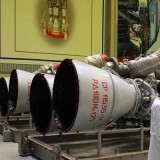United Arab Emirates Explore Potential Collaboration on Turkish KAAN Fighter for Advanced Air Superiority and Defense Capabilities

{loadposition bannertop}
{loadposition sidebarpub}
At the IDEX 2025 exhibition in Abu Dhabi, the United Arab Emirates expressed interest in the KAAN fighter project developed by Turkish Aerospace Industries (TAI). This marks a new step in the expansion of defense relations between Türkiye and Gulf nations, as the KAAN program continues to attract international attention. The announcement was made by TAI CEO Mehmet Demiroglu, who also mentioned the possibility of jointly developing an air platform between the UAE and Türkiye.At the IDEX 2025 exhibition in Abu Dhabi, the United Arab Emirates expressed interest in the KAAN fighter project developed by Turkish Aerospace Industries (TAI). This marks a new step in the expansion of defense relations between Türkiye and Gulf nations, as the KAAN program continues to attract international attention. The announcement was made by TAI CEO Mehmet Demiroglu, who also mentioned the possibility of jointly developing an air platform between the UAE and Türkiye.
Follow Army Recognition on Google News at this link
In terms of armament, the KAAN has eight internal and six external hardpoints, allowing it to carry air-to-air missiles such as the Peregrine (Gökdoğan) and Skykhan (Gökhan), as well as air-to-ground weapons like the SOM-J, KUZGUN-TJ, and AKBABA for precision strikes. (Picture source: Army Recognition)
The KAAN is a fifth-generation stealth air superiority fighter designed by TAI to replace Türkiye’s fleet of F-16 Fighting Falcons and to be offered for export. It features a twin-engine configuration and incorporates advanced technologies, including a carbon composite fuselage to reduce its radar signature, supercruise capability, and integrated sensors for data fusion and networked warfare. The aircraft is equipped with the MURAD-600A AESA radar, advanced electro-optical systems such as the KARAT-200 IRST, and a digital cockpit with the TULGAR helmet. It is designed for multi-role missions, including air defense, strike operations, and reconnaissance.
In terms of armament, the KAAN has eight internal and six external hardpoints, allowing it to carry air-to-air missiles such as the Peregrine (Gökdoğan) and Skykhan (Gökhan), as well as air-to-ground weapons like the SOM-J, KUZGUN-TJ, and AKBABA for precision strikes. Its self-protection system includes radar warning sensors, the IRFS electronic warfare suite, infrared countermeasures, and the capability to coordinate with drones such as the ANKA-III for autonomous operations. The aircraft is currently powered by General Electric F110 engines, with a domestically developed engine expected to be introduced later. Initial service entry is planned for 2028, with full-scale production aimed at strengthening Türkiye’s air capabilities and international partnerships.
TAI played a central role at IDEX 2025, attracting the attention of various official delegations, including from the UAE. Speaking to Turkish media outlet TRT Haber, Demiroglu confirmed that high-level discussions took place with UAE representatives regarding potential cooperation on the KAAN fighter. He emphasized that the program is not exclusively a national initiative but could include additional international partners, with Saudi Arabia already collaborating on the project.
The UAE’s interest in Turkish defense technology extends beyond the KAAN. TAI and Emirati defense company Calidus signed an agreement to modernize and develop the Hurkus trainer aircraft. This partnership aims to enhance the UAE Air Force’s training capabilities by incorporating technical upgrades and fostering industrial cooperation between the two nations.
Additionally, attack helicopters are part of the discussions between Türkiye and the UAE. The Gulf nation has shown interest in the Turkish ATAK helicopter for several years. Emirati forces previously tested the platform and gave it a positive evaluation. However, negotiations for a potential acquisition were put on hold before being revived at IDEX 2025. The latest discussions seek to reassess the terms of a possible purchase and explore deeper cooperation in this sector.
Beyond existing aircraft programs, the two countries are also considering the joint development of a new air platform. According to Demiroglu, the UAE has expressed strong interest in the ANKA-3 combat drone, designed for reconnaissance and strike missions. As part of the latest generation of unmanned aerial systems, this platform aligns with the broader cooperation framework between Ankara and Abu Dhabi and supports efforts to modernize air forces with advanced UAV technologies.
Regarding the KAAN program, TAI is actively progressing with prototype development. The second prototype is expected to be completed by the end of 2025, followed by a third in early 2026. Türkiye aims to accelerate testing and production to meet its original schedule, with first deliveries planned for 2028.
The UAE’s interest in the KAAN reflects the growing international recognition of Türkiye’s defense industry. While Türkiye seeks strategic partnerships to expand its influence in military aviation, the UAE is looking to diversify its acquisitions and modernize its forces with cutting-edge technology. These discussions align with a broader trend of increased defense collaboration between the two nations, aiming to strengthen bilateral ties and develop joint projects to address regional security challenges.

{loadposition bannertop}
{loadposition sidebarpub}
At the IDEX 2025 exhibition in Abu Dhabi, the United Arab Emirates expressed interest in the KAAN fighter project developed by Turkish Aerospace Industries (TAI). This marks a new step in the expansion of defense relations between Türkiye and Gulf nations, as the KAAN program continues to attract international attention. The announcement was made by TAI CEO Mehmet Demiroglu, who also mentioned the possibility of jointly developing an air platform between the UAE and Türkiye.At the IDEX 2025 exhibition in Abu Dhabi, the United Arab Emirates expressed interest in the KAAN fighter project developed by Turkish Aerospace Industries (TAI). This marks a new step in the expansion of defense relations between Türkiye and Gulf nations, as the KAAN program continues to attract international attention. The announcement was made by TAI CEO Mehmet Demiroglu, who also mentioned the possibility of jointly developing an air platform between the UAE and Türkiye.
In terms of armament, the KAAN has eight internal and six external hardpoints, allowing it to carry air-to-air missiles such as the Peregrine (Gökdoğan) and Skykhan (Gökhan), as well as air-to-ground weapons like the SOM-J, KUZGUN-TJ, and AKBABA for precision strikes. (Picture source: Army Recognition)
The KAAN is a fifth-generation stealth air superiority fighter designed by TAI to replace Türkiye’s fleet of F-16 Fighting Falcons and to be offered for export. It features a twin-engine configuration and incorporates advanced technologies, including a carbon composite fuselage to reduce its radar signature, supercruise capability, and integrated sensors for data fusion and networked warfare. The aircraft is equipped with the MURAD-600A AESA radar, advanced electro-optical systems such as the KARAT-200 IRST, and a digital cockpit with the TULGAR helmet. It is designed for multi-role missions, including air defense, strike operations, and reconnaissance.
In terms of armament, the KAAN has eight internal and six external hardpoints, allowing it to carry air-to-air missiles such as the Peregrine (Gökdoğan) and Skykhan (Gökhan), as well as air-to-ground weapons like the SOM-J, KUZGUN-TJ, and AKBABA for precision strikes. Its self-protection system includes radar warning sensors, the IRFS electronic warfare suite, infrared countermeasures, and the capability to coordinate with drones such as the ANKA-III for autonomous operations. The aircraft is currently powered by General Electric F110 engines, with a domestically developed engine expected to be introduced later. Initial service entry is planned for 2028, with full-scale production aimed at strengthening Türkiye’s air capabilities and international partnerships.
TAI played a central role at IDEX 2025, attracting the attention of various official delegations, including from the UAE. Speaking to Turkish media outlet TRT Haber, Demiroglu confirmed that high-level discussions took place with UAE representatives regarding potential cooperation on the KAAN fighter. He emphasized that the program is not exclusively a national initiative but could include additional international partners, with Saudi Arabia already collaborating on the project.
The UAE’s interest in Turkish defense technology extends beyond the KAAN. TAI and Emirati defense company Calidus signed an agreement to modernize and develop the Hurkus trainer aircraft. This partnership aims to enhance the UAE Air Force’s training capabilities by incorporating technical upgrades and fostering industrial cooperation between the two nations.
Additionally, attack helicopters are part of the discussions between Türkiye and the UAE. The Gulf nation has shown interest in the Turkish ATAK helicopter for several years. Emirati forces previously tested the platform and gave it a positive evaluation. However, negotiations for a potential acquisition were put on hold before being revived at IDEX 2025. The latest discussions seek to reassess the terms of a possible purchase and explore deeper cooperation in this sector.
Beyond existing aircraft programs, the two countries are also considering the joint development of a new air platform. According to Demiroglu, the UAE has expressed strong interest in the ANKA-3 combat drone, designed for reconnaissance and strike missions. As part of the latest generation of unmanned aerial systems, this platform aligns with the broader cooperation framework between Ankara and Abu Dhabi and supports efforts to modernize air forces with advanced UAV technologies.
Regarding the KAAN program, TAI is actively progressing with prototype development. The second prototype is expected to be completed by the end of 2025, followed by a third in early 2026. Türkiye aims to accelerate testing and production to meet its original schedule, with first deliveries planned for 2028.
The UAE’s interest in the KAAN reflects the growing international recognition of Türkiye’s defense industry. While Türkiye seeks strategic partnerships to expand its influence in military aviation, the UAE is looking to diversify its acquisitions and modernize its forces with cutting-edge technology. These discussions align with a broader trend of increased defense collaboration between the two nations, aiming to strengthen bilateral ties and develop joint projects to address regional security challenges.





